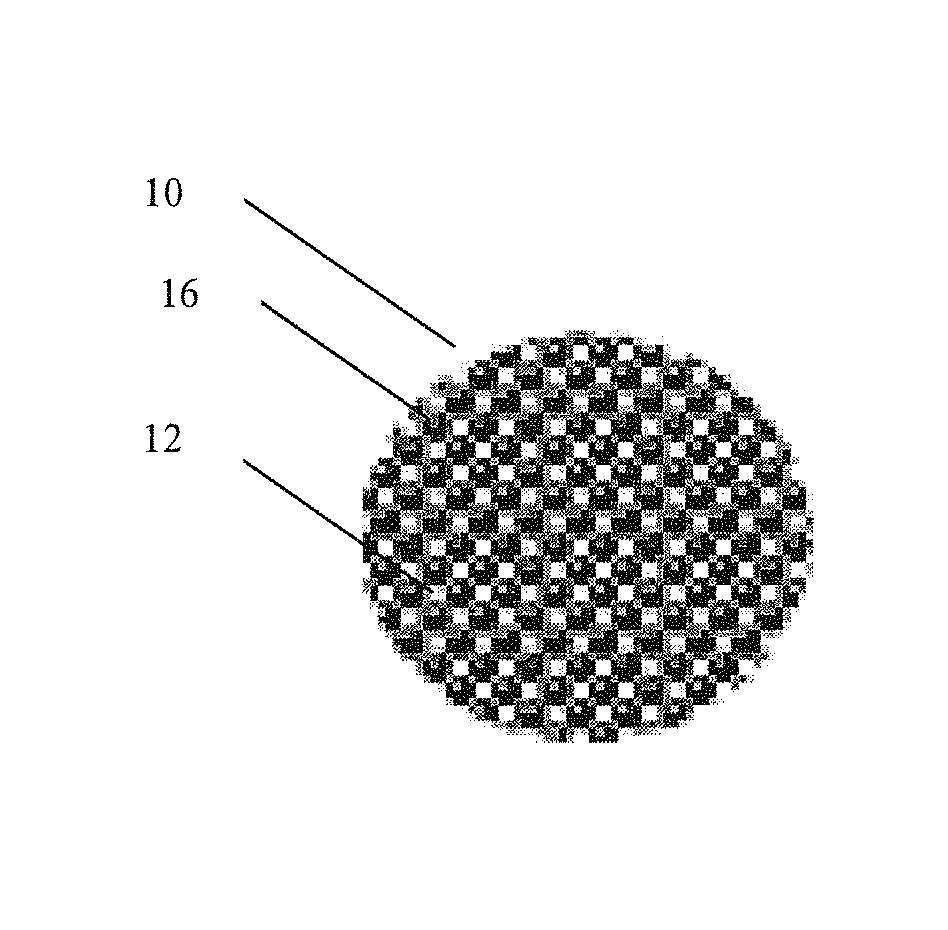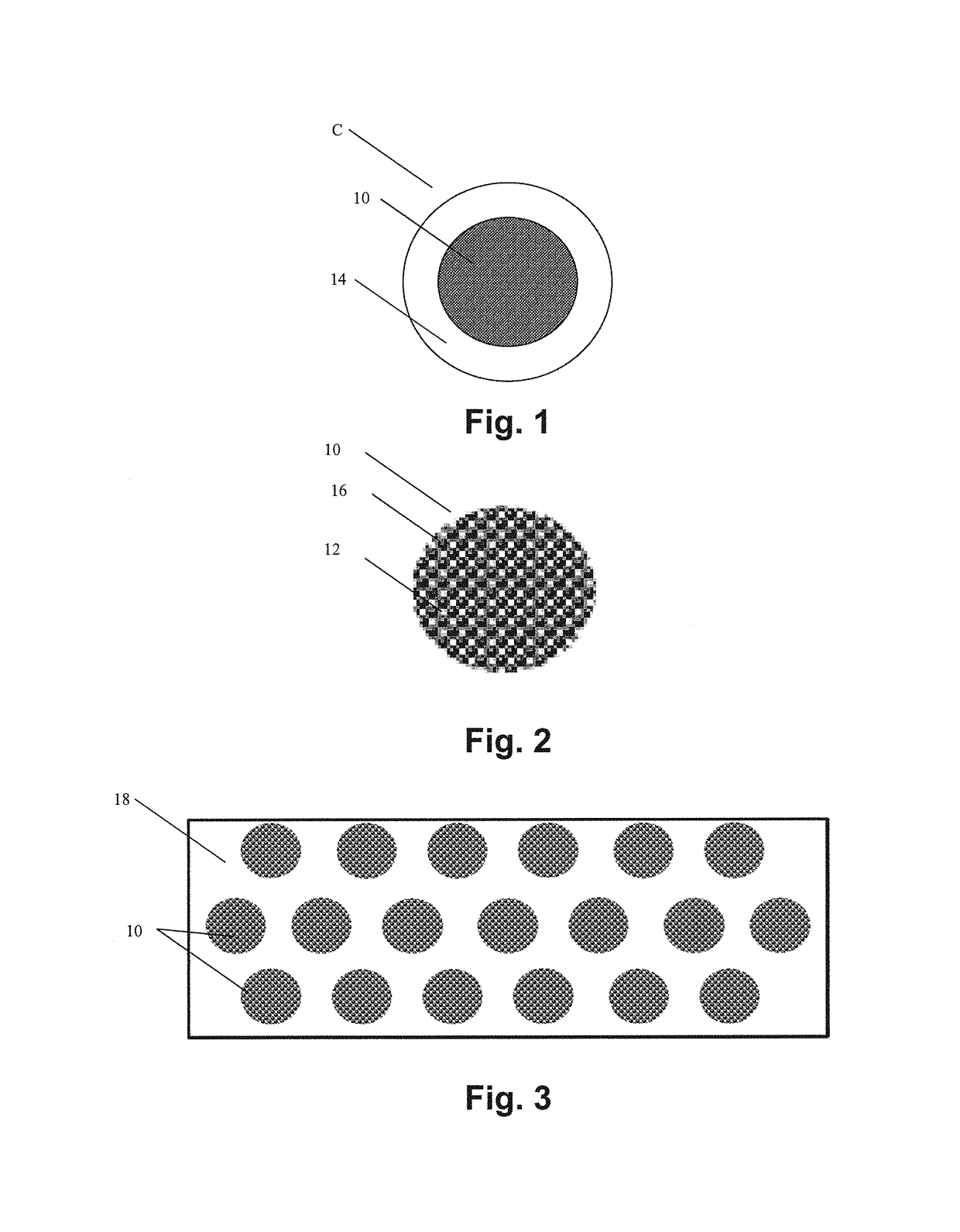Heterogeneous composite bodies with isolated cermet regions formed by high temperature, rapid consolidation
a composite body and high temperature technology, applied in the direction of shaft and bearing, rotary bearing, metal-working apparatus, etc., can solve the problems of inability to meet the requirements of cemented tungsten carbide, catastrophic failure, and inconsistent manufacturing quality of silicon nitride components, so as to improve toughness and impact resistance of the heterogeneous body, increase the spacing, and quickly abrade away
- Summary
- Abstract
- Description
- Claims
- Application Information
AI Technical Summary
Benefits of technology
Problems solved by technology
Method used
Image
Examples
example 1
[0041]A ceramic-metallic composite was produced with a composition of about 45-50 wt % TiN, about 40-45 wt % Co—Mo—Cr, and about 10 weight percent niobium binder. The ceramic-metallic composite was consolidated using spark plasma sintering above about 1000° C. The consolidated material exhibited a hardness of 1278 HV(300) and coefficients of friction of less than about 0.10 in diesel fuel, and about 0.40 in dry contact with steel. No material wear was observed after friction testing with pin on disk tribometer.
example 2
[0042]The material formed in Example 1 was machined using electrical discharge machining into an about 2 in. wide, ¼ in. thick flat thrust bearing with an internal diameter of about 1 in.
example 3
[0043]The material formed in Example 1 was precision-machined using electrical discharge machining into about a 1 in. tall hollow cylinder with about ⅛ in. wall thickness. This cylindrical piece was interference fitted into a steel bushing to form a cermet lined bushing.
PUM
| Property | Measurement | Unit |
|---|---|---|
| width | aaaaa | aaaaa |
| grain size | aaaaa | aaaaa |
| volume percent | aaaaa | aaaaa |
Abstract
Description
Claims
Application Information
 Login to View More
Login to View More - R&D
- Intellectual Property
- Life Sciences
- Materials
- Tech Scout
- Unparalleled Data Quality
- Higher Quality Content
- 60% Fewer Hallucinations
Browse by: Latest US Patents, China's latest patents, Technical Efficacy Thesaurus, Application Domain, Technology Topic, Popular Technical Reports.
© 2025 PatSnap. All rights reserved.Legal|Privacy policy|Modern Slavery Act Transparency Statement|Sitemap|About US| Contact US: help@patsnap.com



